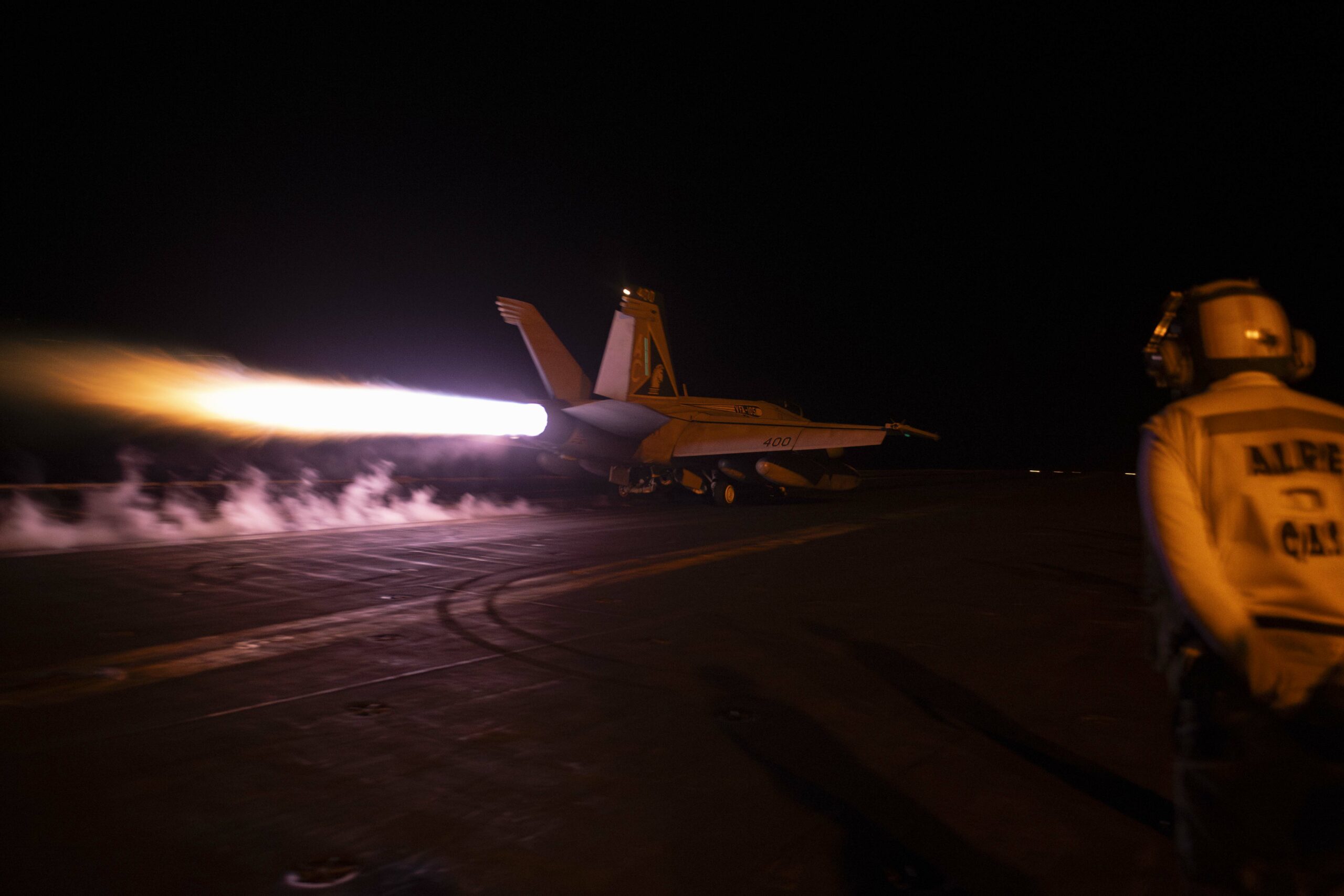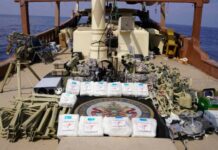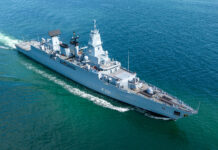US and UK forces launched a third joint strike on Houthi military targets in Yemen on 3 February 2024 in response to the Houthis’ continued attacks against commercial shipping and naval vessels transiting the Red Sea.
UK Royal Air Force (RAF) Typhoon FGR4s joined US forces in conducting strikes against 36 Houthi targets at 13 locations in Houthi-controlled areas of Yemen, according to a press release by US Central Command (CENTCOM)
The first joint US/UK strike on Houthi positions took place on 11/12 January 2024, with the US using fighters despatched from regional bases and the aircraft carrier USS Dwight D Eisenhower as well as Tomahawk cruise missiles fired from naval vessels, while the UK employed four Typhoons flying out of RAF Akrotiri on Cyprus.
US forces then mounted several unilateral attacks on Houthi targets in the following days – in particular anti-ship missiles that were being prepared to launch – before a second joint US/UK strike took place on 22 January.
US forces again continued with a number of unilateral strikes before the third joint US/UK strike on 3 February.
Later that day a joint statement from Australia, Bahrain, Denmark, Canada, the Netherlands, New Zealand, the United Kingdom and the United States said, “These precision strikes are intended to disrupt and degrade the capabilities that the Houthis use to threaten global trade, and the lives of innocent mariners, and are in response to a series of illegal, dangerous, and destabilising Houthi actions since previous coalition strikes on January 11 and 22, 2024, including the January 27 attack which struck and set ablaze the Marshall Islands-flagged oil tanker M/V Marlin Luanda.
“Today’s strike specifically targeted sites associated with the Houthis’ deeply buried weapons storage facilities, missile systems and launchers, air defense systems, and radars.”
The statement then said, “The Houthis’ now more-than 30 attacks on commercial vessels and naval vessels since mid-November constitute an international challenge. Recognising the broad consensus of the international community, our coalition of like-minded countries committed to upholding the rules-based order has continued to grow. We remain committed to protecting freedom of navigation and international commerce and holding the Houthis accountable for their illegal and unjustifiable attacks on commercial shipping and naval vessels.
“Our aim remains to de-escalate tensions and restore stability in the Red Sea, but let us reiterate our warning to Houthi leadership: we will not hesitate to continue to defend lives and the free flow of commerce in one of the world’s most critical waterways in the face of continued threats.”
With the US military stating that more actions against the Houthis are to come, while the Houthis themselves remain as defiant as ever, the situation in the Middle East is becoming increasingly convoluted.

Iran, which provides military support to the Houthis, has typically sought to use such proxies to cause strategic problems for the United States and Israel.
On 2 February, however, US forces conducted major airstrikes on 85 targets across seven locations in Iraq and Syria, retaliating against Iran-backed militias following the killing of three US service personnel at a military outpost in Jordan on 28 January by a bomb-laden unmanned aerial vehicle.
That attack marked the first time US troops had been killed by hostile fire in the Middle East since the 7 October 2023 Hamas raid on Israel and subsequent war in Gaza stoked major tensions in the region and prompted the Houthi shipping attacks.
Western forces, in particular those of the US, are thus more engaged against Iran than they have been for several years, albeit with Iranian proxies rather than Tehran’s forces directly, at lase for now.












